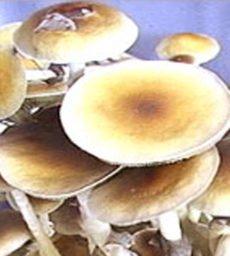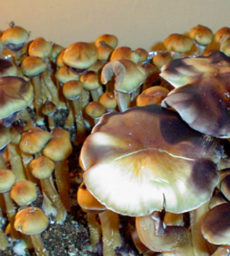-
Sale!


Hairy Buffalo Spores
$19.98 – $217.50Hairy Buffalo Spores
Hairy Buffalo Spores mushrooms and their spores are also some of the most sought after psilocybe cubensis magic mushrooms ever found. Spores from the Hairy Buffalo Spores mushroom are available here at SporeStore.com because you asked for them! Find both mushroom spore syringes and also mushroom spore prints. This psilocybe cubensis magic mushroom was first discovered on a farm growing in a pile of dung and straw as its mushroom substrate in Thailand. There is no psilocybin or psilocin contained within magic mushroom spores, making them completely legal to purchase and posses in most jurisdictions throughout the USA. As well as make sure to check your local laws before ordering. The original Hairy Buffalo Spores mushroom spores’ genetics from the true Hairy Buffalo Spores psilocybe cubensis mushrooms from Thailand are brought to you by SporeStore.com, the leader in mushroom spores.
Spores from this strain are in abundance as it’s a healthy spore depositor.
Hairy Buffalo Spores magic mushrooms are easy to grow. Check your local mushroom growing laws. Growing mushrooms for identification and taxonomy purposes? We have your spores!
In addition to the Hairy Buffalo Spores spores, here are some other mushroom spores that you may be interested in reviewing: Alcabenzi mushroom magic spores, B+ mushroom spores which is also called B Plus mushroom spores, PES Amazonian mushroom spores, PES Hawaiian mushroom spores, Ecuador spores
Furthermore check out our new Mushroom Grinder!
Mushroom Capsules found here…
More Detail:
Storage: Store in a dark, cool and dry place and use within six months after delivery!
Taxonomy:
Kingdom: Fungi
Division: Basidiomycota
Class: Agaricomycetes
Order: Agaricales
Family: Strophariaceae
Genus: Psilocybe
Spores: purplish brown to dark brown, 11.5 – 17 x 8 – 11 µm, ellipsoidHabitat and distribution in nature:
Rye grain, wheat straw, horse or cow manure. This species can be found in the subtropical and tropical climate zones all around the globe under the following conditions: Spawn run incubation: 28 °C | Primordia formation: 23.3 – 25.6 °C | Fruiting: 23 – 26 °C
A 2011 study also found that more than a year after participants had a single psilocybin experience, their self-reported measures of openness remained significantly elevated, which researches in this study and beyond attribute to a somewhat mysterious but powerful aspect of a mushroom trip: the mystical experience.
In this case, a mystical experience is defined as “feelings of unity and interconnectedness with all people and things, a sense of sacredness, feelings of peace and joy, a sense of transcending normal time and space, ineffability, and an intuitive belief that the experience is a source of objective truth about the nature of reality.” The religious identification of people who have reported having a mystical-type experience during a mushroom trip span the spectrum, but interestingly the profundity of such experiences don’t seem to correlate to religious belief—even atheists have reported the importance of their psilocybin-induced mystical experiences. Additionally, research has shown that the more intense the mystical experience, the greater the positive, long-term changes a person sees.
These subjective effects, such as feelings of interconnectedness, are likely a result of psilocybin’s ability to decrease the interconnectivity of integration hubs in the brain. In plain speak, that means psilocybin allows for more “cross-talk” between regions of the brain that are typically segregated. Researchers speculate that this enables a state of “unconstrained cognition,” meaning the ways we typically organize, categorize, and differentiate the aspects of conscious experience are broken down, and thinking becomes more flexible. To understand how this might be beneficial, it helps to know that similar brain activity patterns are also observed during various states of meditation.
Habitat: Bovine, Equine Dung and Enriched Soils
Climate: Subtropical
Strain Origin: Unknown
Cap: 25-75 mm in diameter, hemispheric to convex expanding to broadly convex to nearly plane with age. Dark red maturing to golden brown. Surface viscid with apparent gelatinous layer when very wet, soon smooth from drying. Fine fibrillose veil remnants when young that soon disappear. Flesh white soon bruising bluish green.
Stem: 150-200+ mm in length. Typically equal, sometimes slightly enlarged at base, sometimes contorted. Yellowish to buff with a reflective sheen, bruising bluish, hollow. Partial veil membranous leaving a persistent membranous annulus that is well dusted with purplish brown spores even before tearing away from the cap.
Gills: Attachment adnate to adnexed. Grayish coloration in young fruit bodies becoming nearly black in maturity.
Spores: Dark purplish brown, subellipsoid, 13 by 8 micrometers on 4-spored basidia